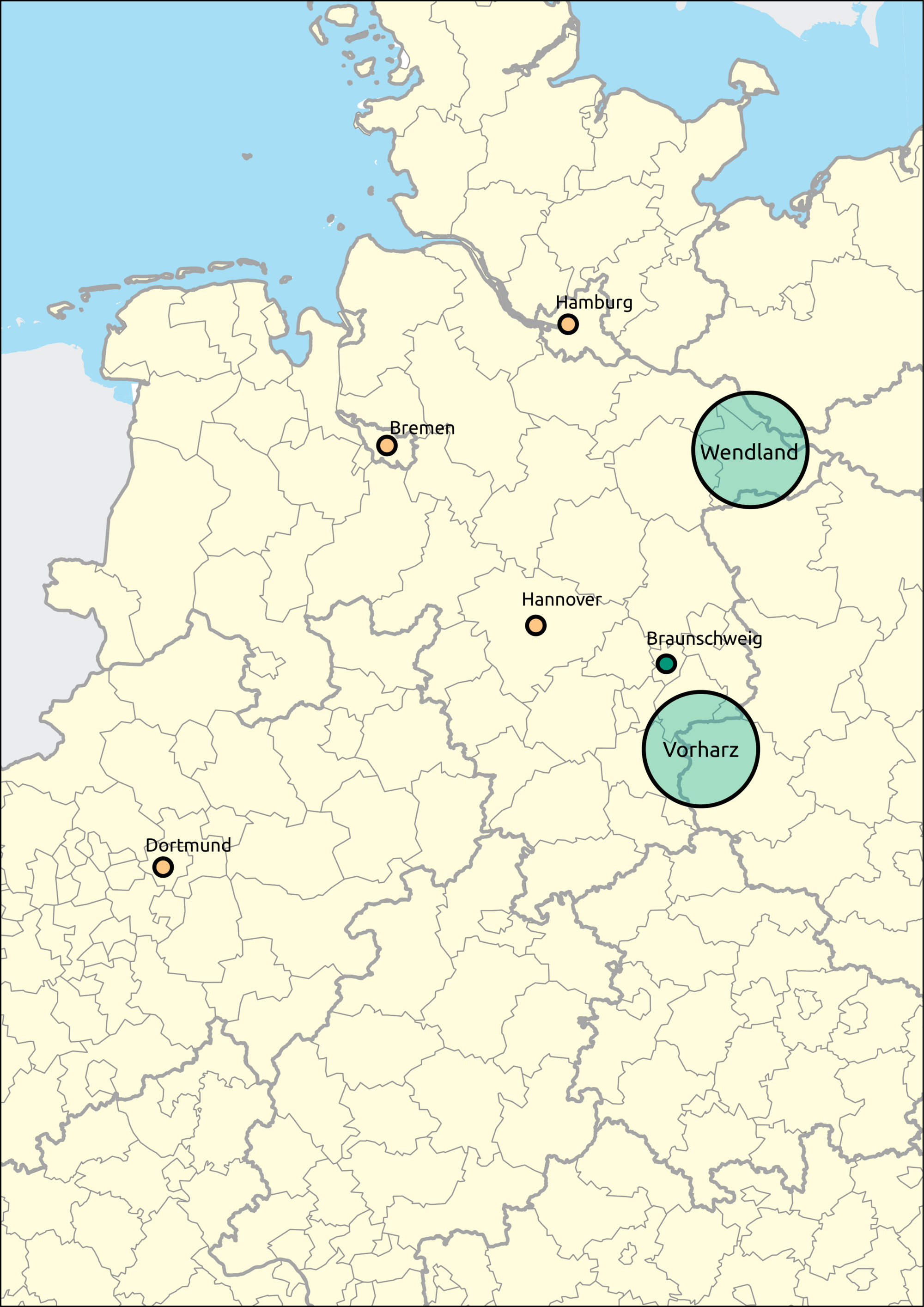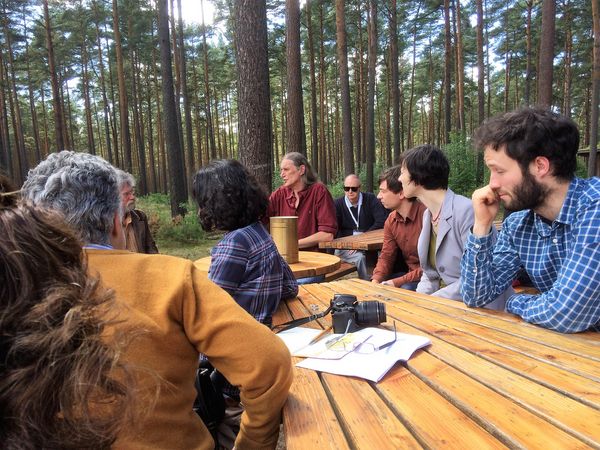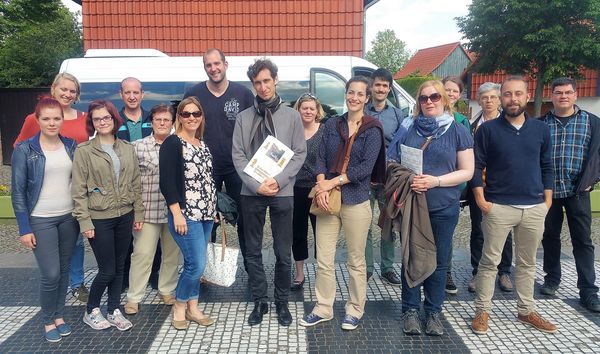Option 1 Wendland: „Peripherality revisited“
This field trip will lead us to the long time peripheralised Wendland, where we will explore discourses and processes that work against its pervasive peripheralisation tendencies to open up a perspective on alternative potentials of rural areas.
The Wendland is one of Germany’s most sparsely populated areas, facing typical challenges of peripheralised areas: demographic change like long-term ageing and a general population decline along with a low economic performance leads to an overall negative assessment of the Wendland’s development in the media, politics and science. At the same time, the region attracts an interest beyond its socio-economic structures. Established as a site of long-standing protest against the atomic depository in Gorleben, the Wendland developed a remarkable scene fostering a strong ecological awareness and projects of alternative and more sustainable ways of living. In this perspective, the Wendland is subject to development, though not in a traditional economic sense.
The field trip draws upon the critical consideration of peripheralisation as a (in part) discursive phenomenon that might powerfully reproduce spatio-structural weaknesses by overemphasising regions’ economised location factors. Thee dominant location-focussed discourse neglects the opportunities of globalisation for remote areas to virtually integrate into economic networks, as well as their valuable non-economised contributions for a larger scale. The field trip thus wants to explore the Wendland as an area of low economic performance and profound demographic changes, but which at the same time exhibits rather unconventional developmental approaches. We will thus critically focus on the juxtaposition of both peripheralisation and de-peripheralisation processes and their relationship in the Wendland.
Field trip route: Diahren - Lübeln - Gorleben
The field trip guide is available here.
Option 2 Vorharz: „The former inner German border – a phantom border?”
This field trip will take us into the Vorharz, a rural area adjacent to the Harz mountains, which had been divided by the inner German border until 1990. We will explore trajectories of the regional development as a former inner German border area. For a long time the Vorharz had been closely integrated. With the sudden geopolitical division of this region into the Federal Republic of Germany (FRG) and the German Democratic Republic (GDR) in 1949, the western Vorharz ended up divided in two different states. Since both the western and the eastern Vorharz had been well integrated, they lacked profound economic networks and infrastructural ties with their neighbouring regions. Both regions thus set off to quite different paths of development, the western Vorharz receiving a zonal border area funding (Zonenrandförderung) to compensate for its structural losses, the eastern Vorharz as a rural area being neglected under socialist planning practice. At the time of the reunification in 1990 both parts of the Vorharz had treaded quite different paths of development. The regional development strategies of the western and eastern Vorharz were not harmonised after 1991; rather, the reunified state instantly terminated the former zonal border area funding and introduced a remarkable support for the integration of the eastern regions into the western economic structures. At the same time, however, the former zonal border areas were not much better developed than their eastern neighbours. Drawing on the concept of “phantom borders” by Hirschhausen et al (2015), the field trip wants to explore to which extent the former inner German border is nowadays still prevalent in regional development. We will aim to assessing the symbolic power of the “phantom border” and if it still reproduces the differentiation between the East and West even nowadays, 26 years after the reunification. We will pay attention to how this might hamper, or in contrast, maybe foster regional development in the rural Vorharz.
By the way, the 17th June used to be the day to commemorate the German unity in the Federal Republic of Germany from 1954-1990. The German Unification Day on 3rd October took over the commemoration after 1990.
Field trip route: Hornburg - former border post - Osterwieck - "Cultural Village of Europe" Ströbeck
The field trip guide is available here.


